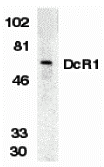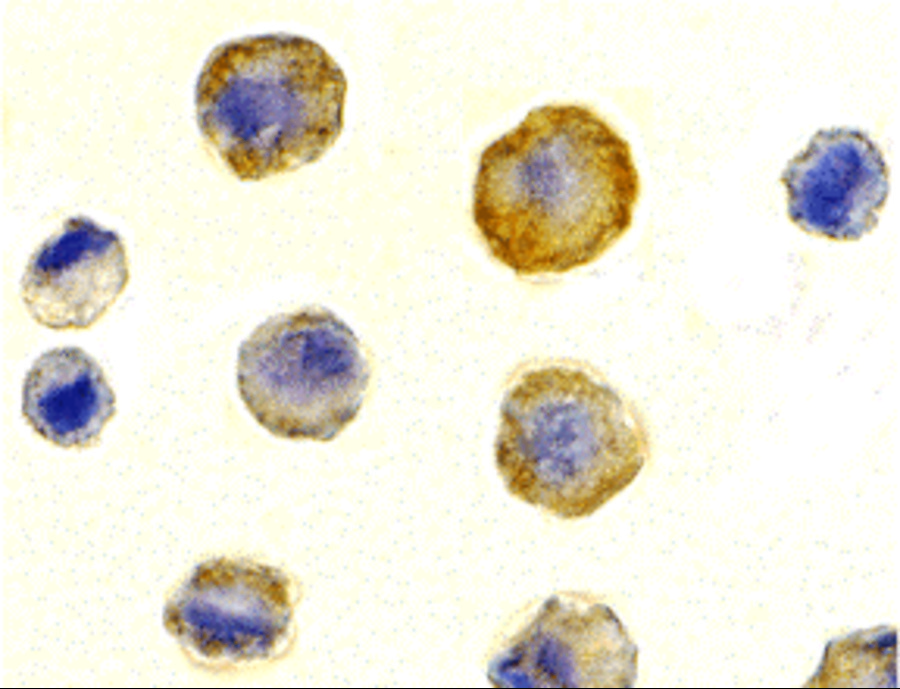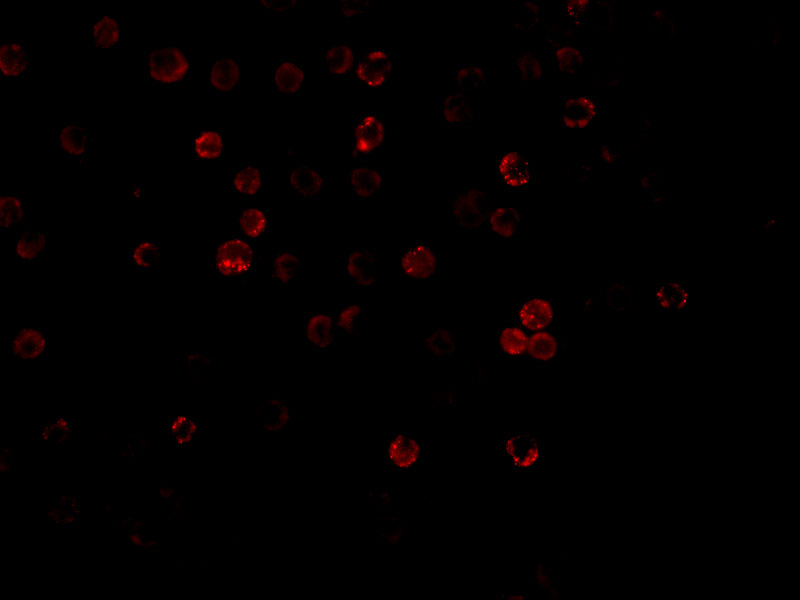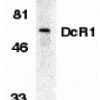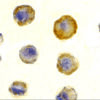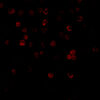Anti-DcR1 (ED) Antibody (2179)
$445.00
| Host | Quantity | Applications | Species Reactivity | Data Sheet | |
|---|---|---|---|---|---|
| Rabbit | 100ug | ELISA,WB,ICC,IF | Human, Mouse, Rat |  |
SKU: 2179
Categories: Antibody Products, Apoptosis Antibodies, Products
Overview
Product Name Anti-DcR1 (ED) Antibody (2179)
Description Anti-DcR1 (ED) Rabbit Polyclonal Antibody
Target DcR1 (ED)
Species Reactivity Human, Mouse, Rat
Applications ELISA,WB,ICC,IF
Host Rabbit
Clonality Polyclonal
Isotype IgG
Immunogen Peptide corresponding to aa 149- 167 at the extracellular domain (ED) of human DcR1 precursor (accession no. AF012536).
Properties
Form Liquid
Concentration Lot Specific
Formulation PBS, pH 7.4.
Buffer Formulation Phosphate Buffered Saline
Buffer pH pH 7.4
Format Purified
Purification Purified by peptide immuno-affinity chromatography
Specificity Information
Specificity This antibody recognizes human, mouse, and rat DcR1 (65kDa).
Target Name Tumor necrosis factor receptor superfamily member 10C
Target ID DcR1 (ED)
Uniprot ID O14798
Alternative Names Antagonist decoy receptor for TRAIL/Apo-2L, Decoy TRAIL receptor without death domain, Decoy receptor 1, DcR1, Lymphocyte inhibitor of TRAIL, TNF-related apoptosis-inducing ligand receptor 3, TRAIL receptor 3, TRAIL-R3, TRAIL receptor without an intracellular domain, CD antigen CD263
Gene Name TNFRSF10C
Gene ID 8794
Accession Number NP_003832
Sequence Location Cell membrane; Lipid-anchor, GPI-anchor.
Biological Function Receptor for the cytotoxic ligand TRAIL. Lacks a cytoplasmic death domain and hence is not capable of inducing apoptosis. May protect cells against TRAIL mediated apoptosis by competing with TRAIL-R1 and R2 for binding to the ligand.
Research Areas Apoptosis
Background TRAIL/Apo2L is a member of the TNF family that induces apoptosis in a variety of tumor cell lines. DR4 and DR5 are the recently identified functional receptors for TRAIL. Two decoy receptors for TRAIL have been designated DcR1/TRID/TRAIL-R3/LIT and DcR2/TRAIL-R4/TRUNDD. DcR1 has an extracellular TRAIL-binding domain but lacks an intracellular signaling domain. It is a glycophospholipid-anchored cell surface protein. DcR1 transcripts are expressed in many normal human tissues but not in most cancer cell lines. Overexpression of DcR1 does not induce apoptosis but attenuates TRAIL-induced apoptosis.
Application Images




Description Western blot analysis of DcR1 in HeLa whole cell lysate with DcR1 antibody (ED) at 1:500 dilution.

Description Immunocytochemistry of DcR1 in HeLa cells with DcR1 antibody at 10 ug/mL.

Description Immunofluorescence of DcR1 in Hela cells with DcR1 antibody at 20 ug/mL.
Handling
Storage This antibody is stable for at least one (1) year at -20°C. Avoid multiple freeze-thaw cycles.
Dilution Instructions Dilute in PBS or medium which is identical to that used in the assay system.
Application Instructions Immunoblotting: use at 1ug/mL.
Immunocytochemistry: use at 10ug/mL.
These are recommended concentrations.
Enduser should determine optimal concentrations for their applications.
Positive control: Whole cell lysate from HeLa cells.
Immunocytochemistry: use at 10ug/mL.
These are recommended concentrations.
Enduser should determine optimal concentrations for their applications.
Positive control: Whole cell lysate from HeLa cells.
References & Data Sheet
Data Sheet  Download PDF Data Sheet
Download PDF Data Sheet
 Download PDF Data Sheet
Download PDF Data Sheet

